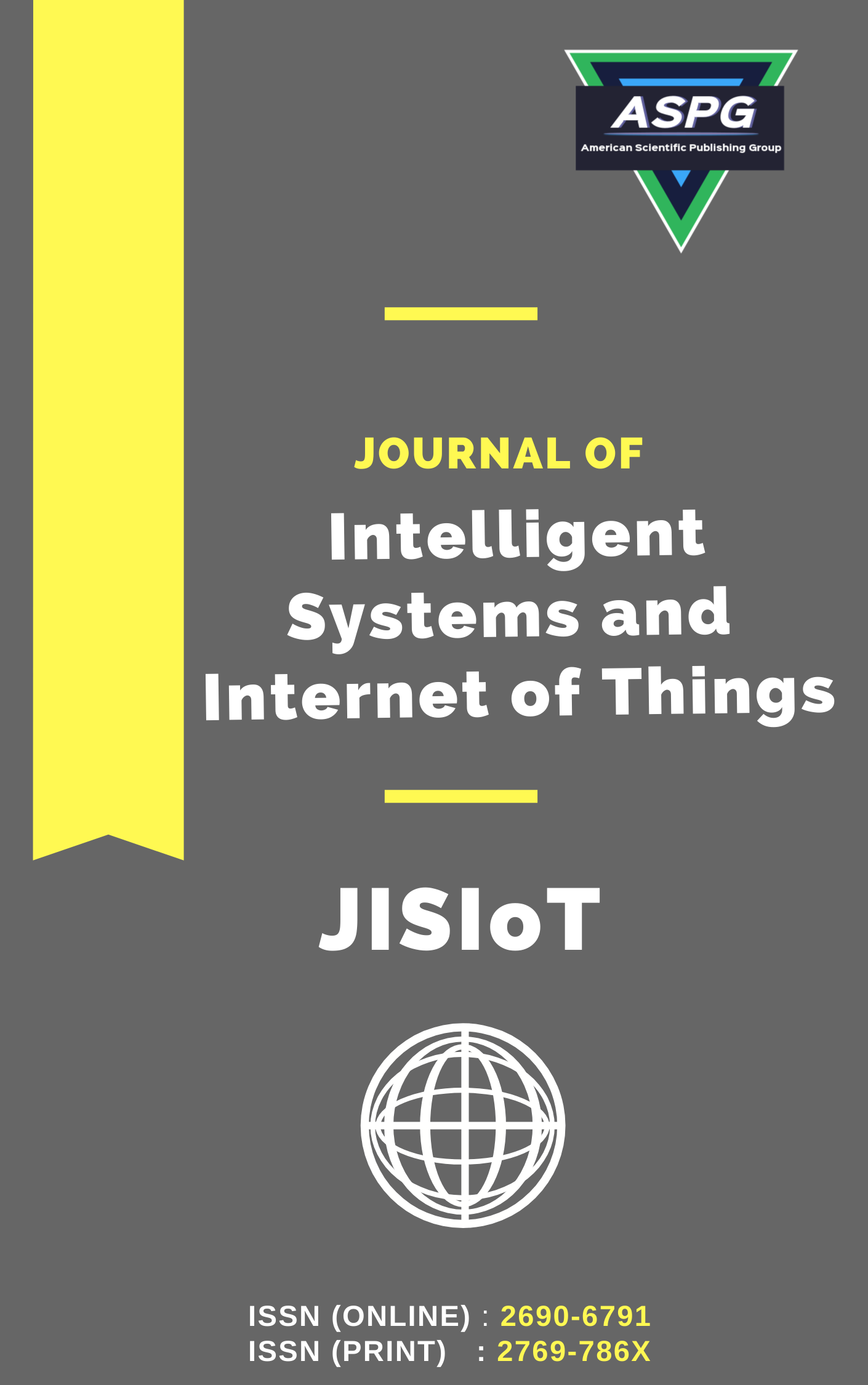

Volume 17 , Issue 2 , PP: 119-132, 2025 | Cite this article as | XML | Html | PDF | Full Length Article
Saleh Ali Alomari 1 *
Doi: https://doi.org/10.54216/JISIoT.170209
The motive of current investigations is to design a computational artificial neural network procedure for the numerical outputs of the fractional order (FO) lumpy skin disease model (LSDM), called as FO-LSDM. The stochastic performances using the optimization of scale conjugate gradient (SCGD) have been implemented to get the solutions of the FO-LSDM. The aim to implement the solutions of the FO is considered more reliable as compared to the integer order. The mathematical form of the LSDM is divided into two populations based on the cattle and vector using the population of susceptible and infected. A numerical Adam scheme is plagued to accomplish the dataset for reducing the mean square error by splitting the statics of endorsement, testing and training as 13%, 12% and 75%. The proposed stochastic neural network approach has a single layer, thirty numbers of neurons, sigmoid activation function, and optimization based SCGD procedure. The exactitude of the SCGD neural network is authenticated through the result comparisons and reducible absolute error around 10-06 to 10-08. Additionally, the correctness of the stochastic process based on the SCGD neural network is evaluated by applying the procedure of state transitions, correlation values, and best training.
Fractional order , Lumpy skin disease , Mathematical model , Scale conjugate , Artificial Neural network
[1] R. I. Abdulganiy et al., "A functionally-fitted block hybrid Falkner method for Kepler equations and related problems," Computational and Applied Mathematics, vol. 42, no. 8, p. 327, 2023. DOI: 10.1007/s40314-023-02463-y.
[2] I. Onder et al., "Stochastic optical solitons of the perturbed nonlinear Schrödinger equation with Kerr law via Ito calculus," The European Physical Journal Plus, vol. 138, no. 9, p. 872, 2023. DOI: 10.1140/epjp/s13360-023-04497-x.
[3] M. Alquran et al., "Novel investigations of dual-wave solutions to the Kadomtsev–Petviashvili model involving second-order temporal and spatial–temporal dispersion terms," Partial Differential Equations in Applied Mathematics, vol. 8, p. 100543, 2023. DOI: 10.1016/j.padiff.2023.100543.
[4] S. Qureshi et al., "A new optimal root-finding iterative algorithm: local and semilocal analysis with polynomiography," Numerical Algorithms, vol. 95, no. 4, pp. 1715-1745, 2024. DOI: 10.1007/s11075-023-01625-7.
[5] W. Adel et al., "Investigating the dynamics of a novel fractional-order monkeypox epidemic model with optimal control," Alexandria Engineering Journal, vol. 73, pp. 519-542, 2023. DOI: 10.1016/j.aej.2023.04.051.
[6] H. Joshi et al., "Stability analysis of a non-singular fractional-order COVID-19 model with nonlinear incidence and treatment rate," Physica Scripta, vol. 98, no. 4, p. 045216, 2023. DOI: 10.1088/1402-4896/acbe7a.
[7] H. Joshi et al., "Modelling and analysis of fractional-order vaccination model for control of COVID-19 outbreak using real data," Mathematical Biosciences and Engineering, vol. 20, no. 1, pp. 213-240, 2023. DOI: 10.3934/mbe.2023010.
[8] M. Higazy et al., "Numerical, approximate solutions, and optimal control on the deathly lassa hemorrhagic fever disease in pregnant women," Journal of Function Spaces, vol. 2021, pp. 1-15, 2021. DOI: 10.1155/2021/2444920.
[9] H. R. Pandey et al., "Vaccination effect on the dynamics of dengue disease transmission models in Nepal: A fractional derivative approach," Partial Differential Equations in Applied Mathematics, vol. 7, p. 100476, 2023. DOI: 10.1016/j.padiff.2022.100476.
[10] M. Yavuz et al., "A new mathematical model for tuberculosis epidemic under the consciousness effect," Mathematical Modelling and Control, vol. 3, no. 2, pp. 88-103, 2023. DOI: 10.3934/mmc.2023009.
[11] W. Ahmad et al., "Effect of quarantine on transmission dynamics of Ebola virus epidemic: a mathematical analysis," The European Physical Journal Plus, vol. 136, no. 4, pp. 1-33, 2021. DOI: 10.1140/epjp/s13360-021-01360-9.
[12] A. Elsonbaty et al., "Dynamical analysis of a novel discrete fractional lumpy skin disease model," Partial Differential Equations in Applied Mathematics, vol. 9, p. 100604, 2024. DOI: 10.1016/j.padiff.2023.100604.
[13] A. S. Heilat et al., "Hybrid Cubic B-spline Method for Solving A Class of Singular Boundary Value Problems," European Journal of Pure and Applied Mathematics, vol. 16, no. 2, pp. 751-762, 2023. DOI: 10.29020/nybg.ejpam.v16i2.4725.
[14] A. Al-Husban et al., "A new incommensurate fractional-order COVID-19: modelling and dynamical analysis," Mathematics, vol. 11, no. 3, p. 555, 2023. DOI: 10.3390/math11030555.
[15] A. Hioual et al., "Fractional discrete neural networks with variable order: solvability, finite time stability and synchronization," Eur. Phys. J. Spec. Top., 2024. DOI: 10.1140/epjs/s11734-024-01167-6.
[16] T. Hamadneh et al., "The FitzHugh–Nagumo Model Described by Fractional Difference Equations: Stability and Numerical Simulation," Axioms, vol. 12, no. 9, p. 806, 2023. DOI: 10.3390/axioms12090806.
[17] T. Hamadneh et al., "Fast Computation of Polynomial Data Points Over Simplicial Face Values," Journal of Information & Knowledge Management, vol. 19, no. 01, 2040001, 2020. DOI: 10.1142/S0219649220400018.
[18] A. S. Heilat et al., "The new fractional discrete neural network model under electromagnetic radiation: Chaos, control and synchronization," Alexandria Engineering Journal, vol. 76, pp. 391-409, 2023. DOI: 10.1016/j.aej.2023.06.017.